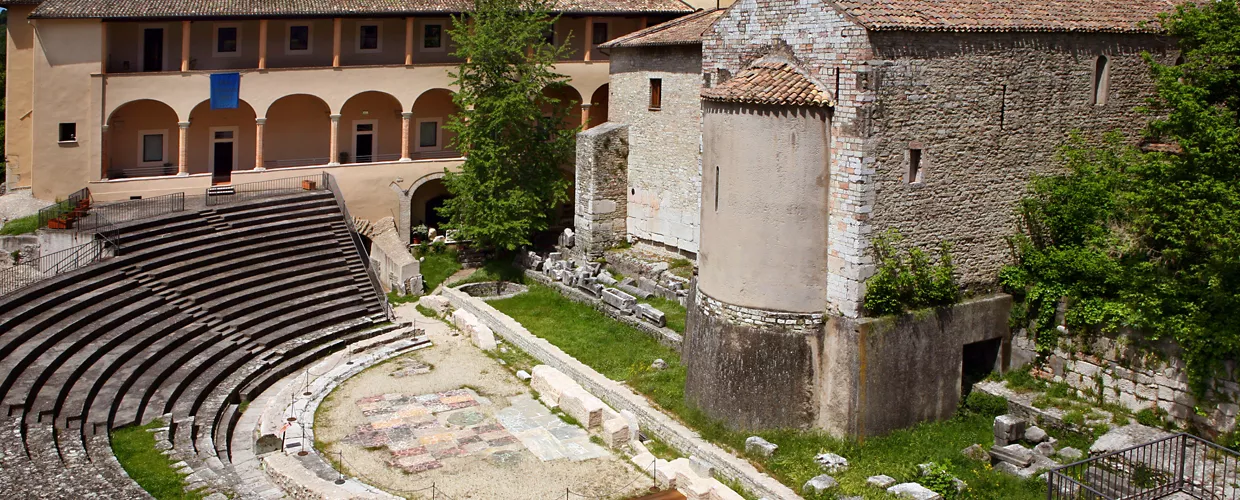This content was automatically translated. View the original text.

Overview
"I climbed up to Spoleto and was on the aqueduct which also serves as a bridge between two mountains. The ten arches of brickwork have stood there so calmly during the centuries, and water still gushes forth everywhere in Spoleto." This is how Goethe, in his 'Italian Journey', described a magnificent view of the city, which, as the poet suggests, should be seen from above. But Goethe was not the only fan of Spoleto. Michelangelo used to come to rest in the Spoleto woods to forget the hustle and bustle of Rome, Stendhal expressed his enthusiasm for the natural spectacle of the promenade that leads from the city centre into the green hills (present-day Viale Matteotti) and William Turner's notebooks contained sketches of the landscape and the city. Spoleto features the scenic verdant backdrop of Monteluco, with its forest of holm oaks, and overlooks the Clitunno valley.
Two kilometres of well-preserved walls bear witness to the ancient grandeur of the city, which still retains the medieval appearance given it by the Longobards, who raised it to the rank of capital of the duchy and embellished it with buildings, making it a genuine pearl of architecture. It was conquered by Barbarossa in 1155 and, after passing under the rule of the Papal States, continued to enjoy a remarkably flourishing artistic life. The urban harmony that had characterised the city for several hundred years was broken in 1834 by architect Ireneo Aleandri, who designed the 'Traversa nazionale' to facilitate vehicular access to Spoleto. After the unification of Italy, Spoleto lost its role as an administrative centre and suffered serious repercussions. Things changed with the intuition of the influential Gian Carlo Menotti, who in 1958 chose Spoleto as the setting for the Festival of the Two Worlds. For an entire fortnight, no one does anything in the city but watch plays, concerts and films in extraordinary locations, or stand in the streets to watch the buskers perform.
The city still reatains its excellent art, culture and architectural venues, all worth visiting, starting with the Albornoziana Fortress, overlooking the city and the valley, Santa Eufemia, the Roman Theatre or the majestic Bridge of Towers. Some also preserve interesting anecdotes, such as the cathedral frescoed by Fra' Filippo Lippi. The friar and painter is said to have died of poisoning after seducing the daughter of a local noble family. However, the people of Spoleto were not disturbed by the events and, mindful of what Vasari said about their cathedral being "not very well supplied with ornaments, especially of illustrious men", they were happy to keep the friar's tomb - designed by his son Filippino Lippi and now in the right transept. The corpse disappeared during restoration work two centuries later. The popular theory is that it was removed by the descendants of the girl he had seduced - in an act of revenge from beyond the grave.
06049 Spoleto PG, Italia